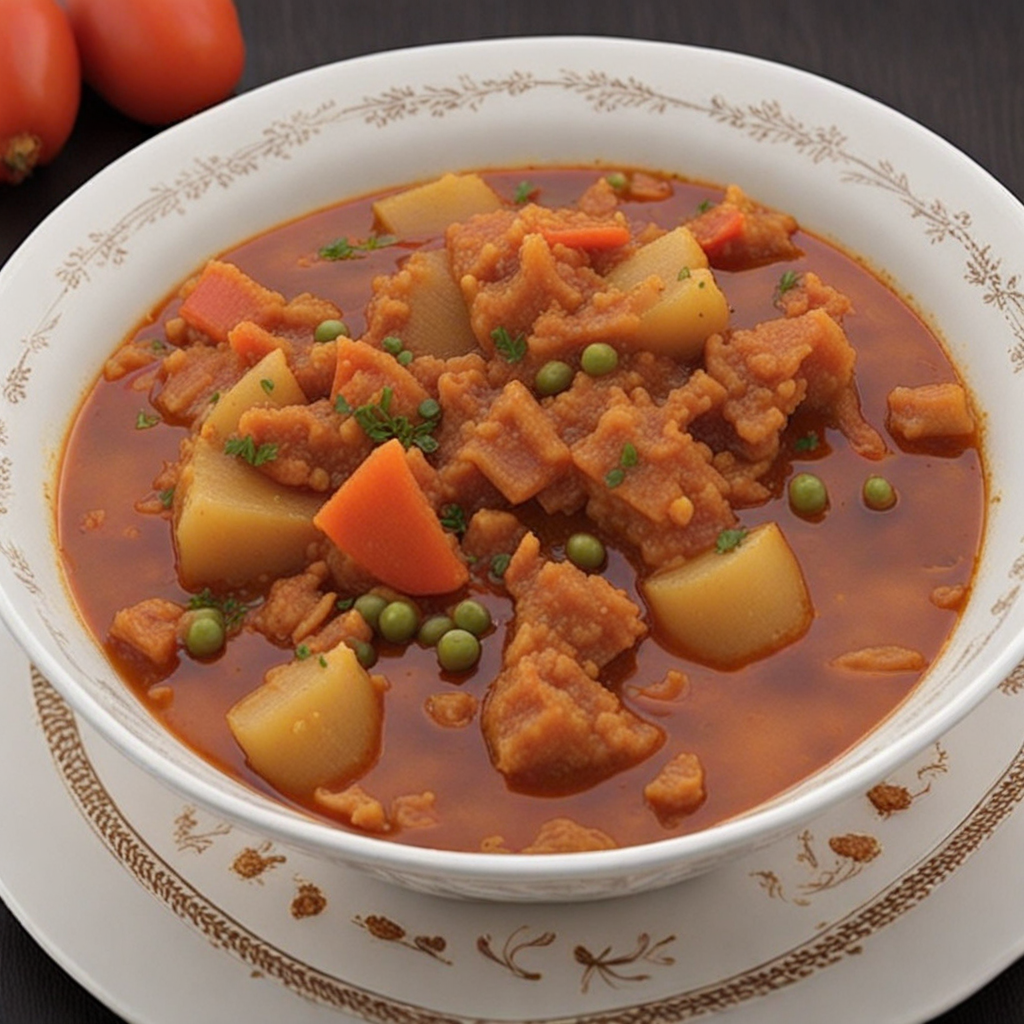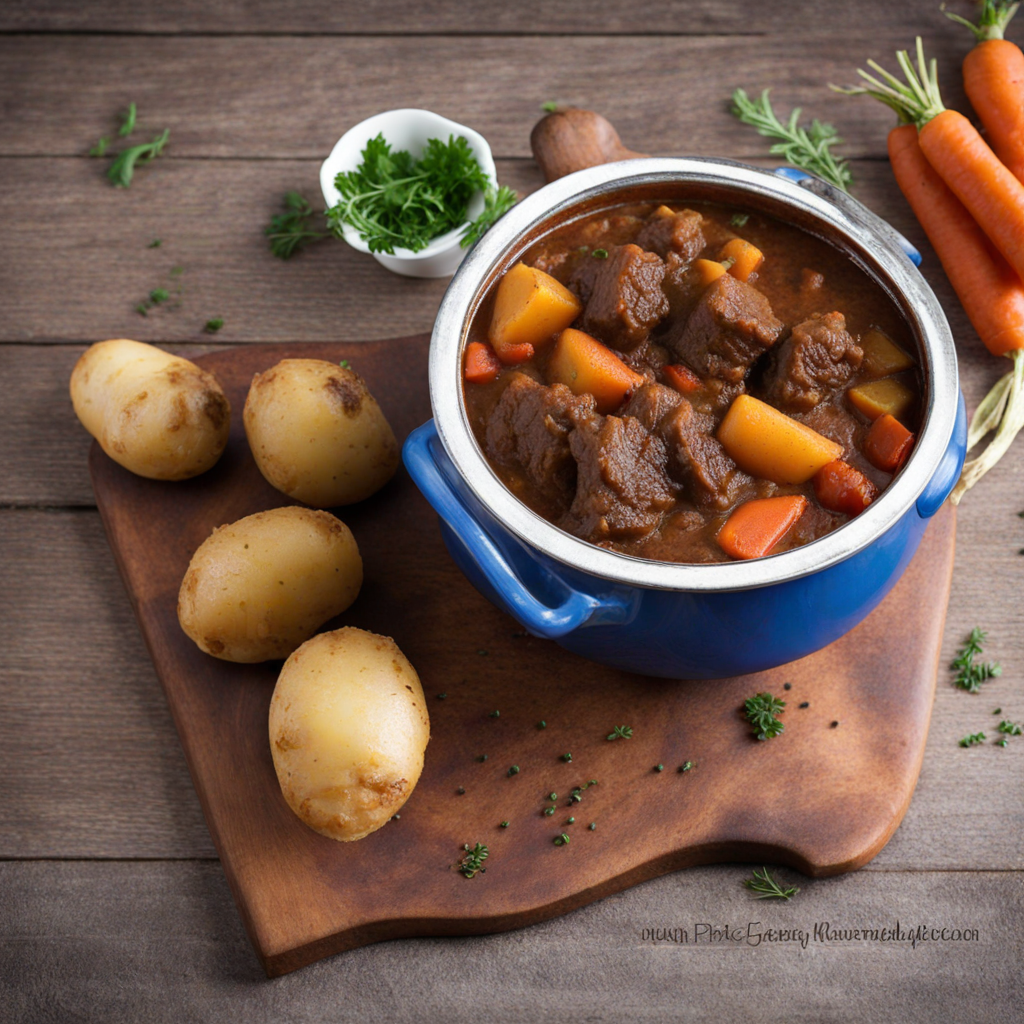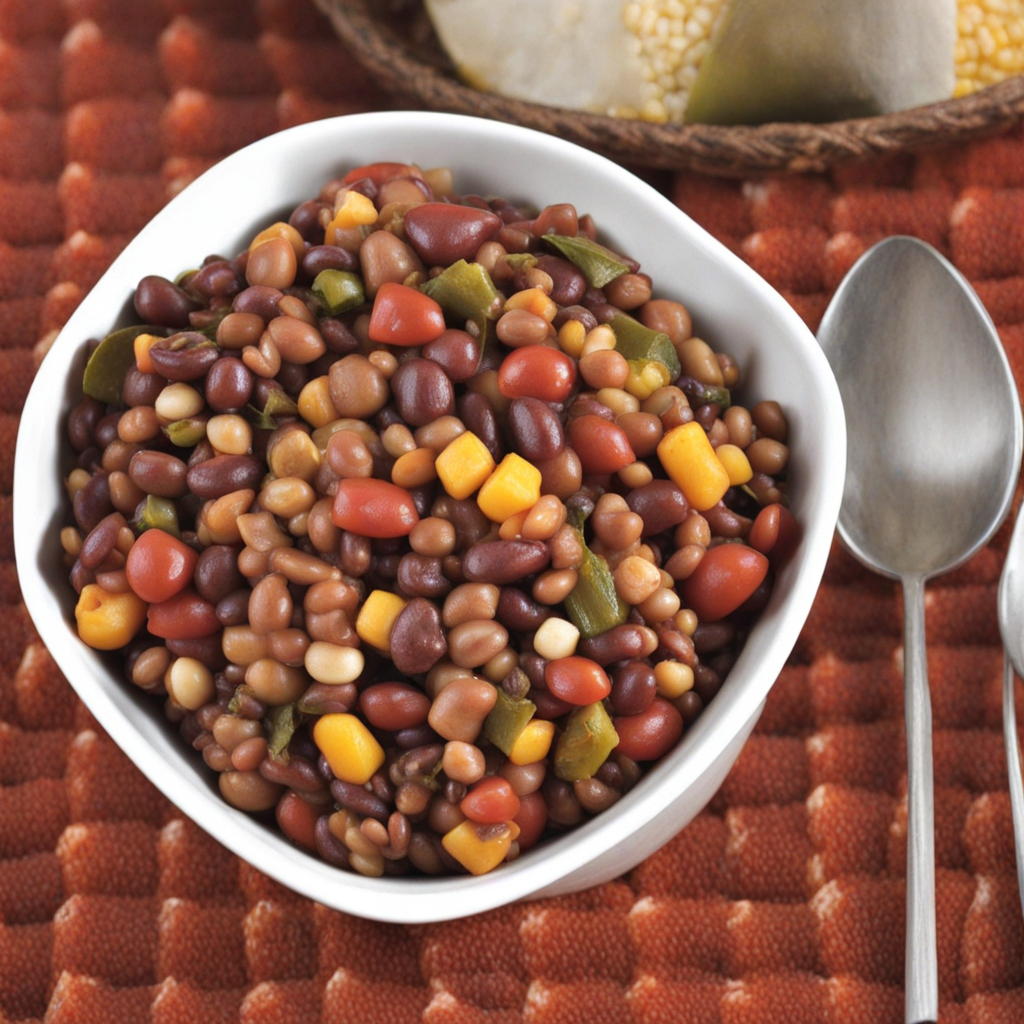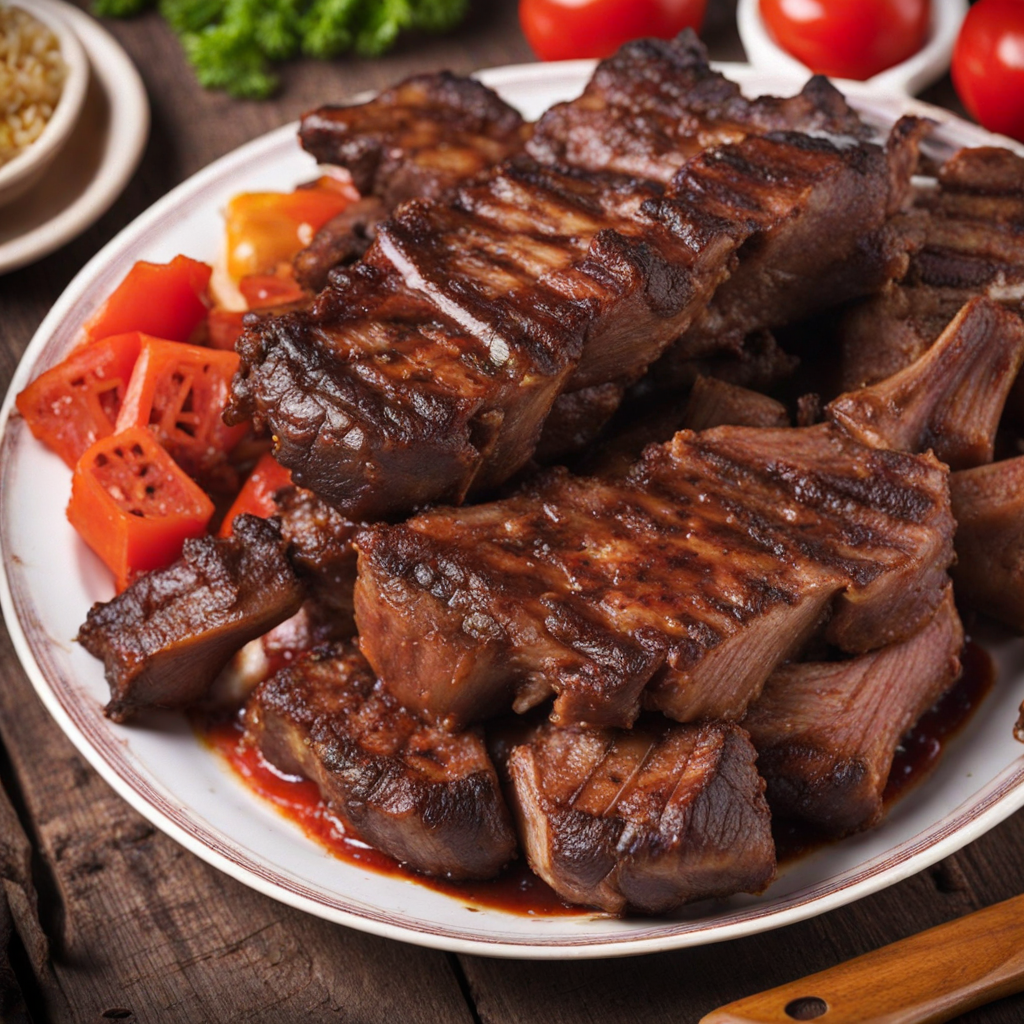Menudo
Menudo is a vibrant and hearty dish that showcases the rich culinary traditions of Kenya. It is a flavorful stew primarily made from beef tripe, which is meticulously cleaned and simmered to achieve a tender texture. The preparation involves a blend of spices and ingredients that reflect the local palate, including garlic, ginger, and a mix of vibrant peppers that lend a delightful heat to the dish. The addition of tomatoes and onions creates a rich, savory base that is both comforting and satisfying, making Menudo a popular choice for gatherings and celebrations. The cooking process of Menudo is an art in itself, as it requires patience and attention to detail. The tripe is boiled to perfection, then stewed for hours with an array of spices, allowing the flavors to meld together beautifully. Traditionally, the dish is often accompanied by ugali, a staple maize porridge, which complements the stew's richness and helps balance the spices. The combination of textures from the tender tripe and the soft, creamy ugali creates a delightful mouthfeel that is both unique and memorable. Menudo is not just a meal; it is a communal experience that brings friends and family together. Often served at special occasions, it evokes a sense of nostalgia and warmth among those who enjoy it. The dish is a testament to Kenya's diverse culinary heritage, showcasing how simple ingredients can come together to create something extraordinary. For anyone looking to explore new flavors, Menudo offers an exciting journey into the heart of Kenyan cuisine, inviting you to savor its robust flavors and celebrate its cultural significance.
How It Became This Dish
Origins of Menudo Menudo, often associated with the culinary traditions of Kenya, is a hearty and flavorful dish primarily made from beef tripe. The origins of this dish can be traced back to the pastoralist cultures of the East African region, where livestock rearing has been a crucial part of the economy and social structure. In many communities, such as the Maasai and Kikuyu, consuming offal, including tripe, has been a way to ensure that no part of the animal goes to waste. This practice reflects a deep respect for the animals that provide sustenance and a resourceful approach to cooking. The preparation of Menudo is deeply intertwined with the cultural practices of communal eating and celebration. Traditionally, it has been served during significant community events, such as weddings, funerals, and festivals, where sharing food is an essential part of the social fabric. The dish is often accompanied by ugali (a staple maize-based dish) or chapati, which helps to balance the rich flavors of the tripe. \n\n Cultural Significance Menudo holds a special place in the hearts of many Kenyans, particularly among communities that celebrate their pastoral heritage. It symbolizes unity and togetherness, often shared among family and friends during gatherings. The preparation and consumption of Menudo also reflect the cultural identity of these communities, as recipes and cooking methods have been passed down through generations. Each family may have its unique take on the dish, incorporating local spices and ingredients that enhance the flavors and textures. The dish is also a source of pride for many Kenyans, showcasing their culinary diversity. It is often featured in food festivals and cultural events, where chefs and home cooks demonstrate their skills and share their stories related to Menudo. In this sense, Menudo is more than just food; it is a narrative of heritage, community, and the deep connection between people and their land. \n\n Development Over Time As Kenya has evolved, so too has the dish of Menudo. The introduction of new cooking techniques and influences from various cultures have transformed the way Menudo is prepared and enjoyed. Urbanization has led to a blending of traditional and modern cooking styles, with restaurants and street vendors offering their unique versions of the dish. This evolution has not diminished the traditional aspects of Menudo but has instead enriched the culinary landscape. In recent years, the global interest in Kenyan cuisine has surged, leading to a revival of traditional dishes like Menudo. Chefs are now experimenting with innovative presentations and flavors, incorporating international ingredients while staying true to the essence of the dish. This has resulted in a fusion of flavors that appeals to both locals and tourists, making Menudo a staple in various dining establishments across the country. \n\n Ingredients and Preparation The ingredients for Menudo primarily focus on beef tripe, which is simmered for several hours to achieve tenderness. The preparation process often includes marinating the tripe with a blend of spices, such as garlic, ginger, and local herbs, to enhance the flavor profile. Additionally, tomatoes, onions, and bell peppers are commonly used to create a rich sauce that complements the tripe. The cooking process is labor-intensive, requiring patience and skill. The tripe must be cleaned thoroughly before cooking, and the simmering process allows the flavors to meld beautifully. Once prepared, Menudo is typically served hot, garnished with fresh cilantro or parsley, and accompanied by side dishes that provide a contrasting texture and flavor. \n\n Regional Variations While Menudo has its roots in various Kenyan communities, regional variations exist that reflect local preferences and available ingredients. For instance, in coastal areas, the dish may incorporate coconut milk and spices that are characteristic of Swahili cuisine, adding a different dimension to the flavor. In contrast, inland regions may emphasize heartier spices and a thicker sauce, showcasing the agricultural bounty of those areas. These regional adaptations highlight the flexibility of Menudo as a dish, allowing it to resonate with diverse audiences while maintaining its core identity. Such variations not only celebrate local flavors but also foster a sense of pride in regional culinary traditions, ensuring that the dish remains relevant and cherished across the country. \n\n Modern-Day Menudo In contemporary Kenya, Menudo is experiencing a renaissance as more people seek to reconnect with traditional foods. Health-conscious consumers are increasingly drawn to the nutritional benefits of offal, which is rich in protein and essential nutrients. Additionally, the rise of food tourism has spotlighted Kenyan cuisine, inviting international visitors to explore dishes like Menudo as part of their culinary journey. Social media has played a pivotal role in this resurgence, with food bloggers and influencers showcasing recipes and cooking demonstrations that celebrate Menudo. This increased visibility has sparked interest among younger generations, who may not have grown up with the dish but are eager to learn about their culinary heritage. \n\n Conclusion In essence, Menudo is more than just a dish; it is a cultural artifact that encapsulates the history, traditions, and evolving identity of Kenyan cuisine. As it continues to adapt to modern tastes while honoring its roots, Menudo remains a beloved food that fosters connection, celebration, and a sense of belonging among those who share it. Through its rich history and vibrant presence in contemporary culture, Menudo is poised to remain a cherished part of Kenya's culinary landscape for generations to come.
You may like
Discover local flavors from Kenya







